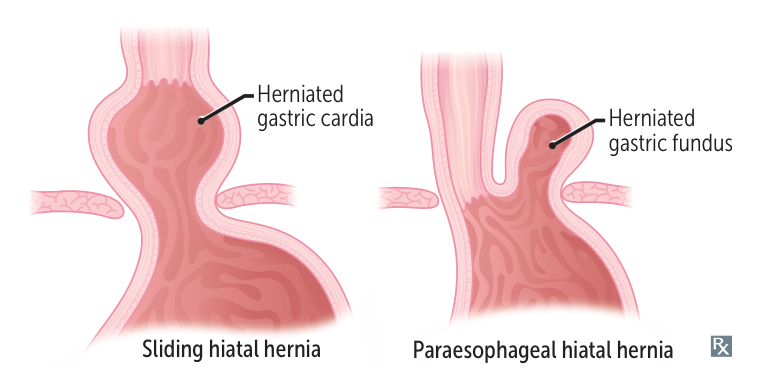Epidemiology
Etiology
- Lax diaphragmatic esophageal hiatus
- Advanced age
- Smoking
- Causes a loss of elastin fibres in the diaphragmatic crura
- Obesity
- Prolonged periods of increased intra-abdominal pressure
- Pregnancy
- Ascites
- Chronic cough
- Chronic constipation
Pathophysiology
Relative negative intrathoracic pressure and the lax hiatus → herniation of the abdominal contents into the thorax → loss of reflux barrier + compromised fluid emptying of distal esophagus → gastroesophageal reflux disease (GERD)
Classification

Type I: sliding hiatal hernia
- Most common type (95% of cases)
- The GEJ and the gastric cardia slide up into the posterior mediastinum.
- The gastric fundus remains below the diaphragm (hourglass stomach)
Type II: paraesophageal hiatal hernia
- Part of the gastric fundus herniates into the thorax.
- The GEJ remains in its anatomical position below the diaphragm.